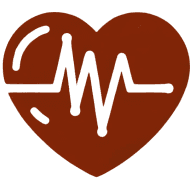How Do You Make Quick Decisions in Cardiology?
Exploring the critical decision-making processes in cardiology, we’ve gathered insights from a Cardiothoracic Surgeon. While she emphasizes learning from errors, we've included five additional answers to provide a holistic perspective on how cardiology professionals swiftly influence patient treatment. From extracting benefits from errors to prioritizing critical symptoms, here are six key strategies employed in the field.
- Extract Benefit from Error
- Use Decision-Support Tools
- Follow Clinical Guidelines
- Consult Multidisciplinary Team
- Leverage Real-Time Imaging
- Prioritize Critical Symptoms
Extract Benefit from Error
To make quick decisions that positively impact patient care, it is crucial to detach from negativity during stressful situations and focus on the facts. During my training, I observed instances where surgeons, under pressure during complex cases involving severely ill patients, would lash out at the staff. While I understood that their outbursts were a manifestation of personal stress, I also noticed that this behavior only increased staff frustration and hindered their performance.
In such situations, I adopted a strategy I call 'Extracting the Benefit from Error.' This involves reframing negative emotions into positive actions. For example, during procedures, I emphasize maintaining clear communication that centers on facts and process, rather than placing blame. This approach helps ensure that the team remains focused and effective, despite the challenges.

Use Decision-Support Tools
Utilizing decision-support tools and algorithms can significantly speed up decision-making in cardiology. These tools analyze patient data rapidly, offering immediate insights. They help in structuring complex information into manageable pieces, which can lead to quicker, more informed choices.
Additionally, algorithms can minimize human error, thus optimizing patient outcomes. It's vital to integrate these tools into daily practice for better efficiency. Start using decision-support tools now and see the benefits firsthand.
Follow Clinical Guidelines
Relying on established clinical guidelines and protocols streamlines the decision-making process in cardiology. These guidelines are based on extensive research and offer clear recommendations for various situations. Adhering to them ensures that the most current and effective treatments are provided.
This approach also promotes consistency and minimizes the risk of mistakes. Make clinical guidelines a cornerstone of your practice. Implement them today to enhance patient care.
Consult Multidisciplinary Team
Consulting with multidisciplinary team members swiftly is crucial in cardiology for quick decision-making. Each team member brings unique expertise that can provide valuable insights into a patient's condition. This collaborative approach ensures that all aspects of the patient's health are considered.
It's especially useful in complex cases where a single perspective might miss vital details. Engage with your team members right away to improve decision accuracy. Foster an environment where swift consultations are standard practice.
Leverage Real-Time Imaging
Leveraging real-time diagnostic imaging is a powerful way to make quick decisions in cardiology. Access to immediate imaging results allows for rapid assessment of a patient's condition. This technology provides detailed images that can pinpoint issues like blockages or structural problems instantly.
It's also instrumental in guiding interventions during emergencies. Make sure real-time imaging is readily available in your facility. Incorporate it into routine care for faster diagnoses.
Prioritize Critical Symptoms
Prioritizing critical symptoms for immediate action is essential in cardiology for quick decision-making. Recognizing which symptoms require urgent intervention can make a difference in patient outcomes. Focusing on the most life-threatening signs first ensures that resources are allocated efficiently.
This prioritization helps in delivering timely and appropriate care, potentially saving lives. Develop a protocol to identify and act on critical symptoms promptly. Train your team to prioritize effectively in high-pressure situations.

